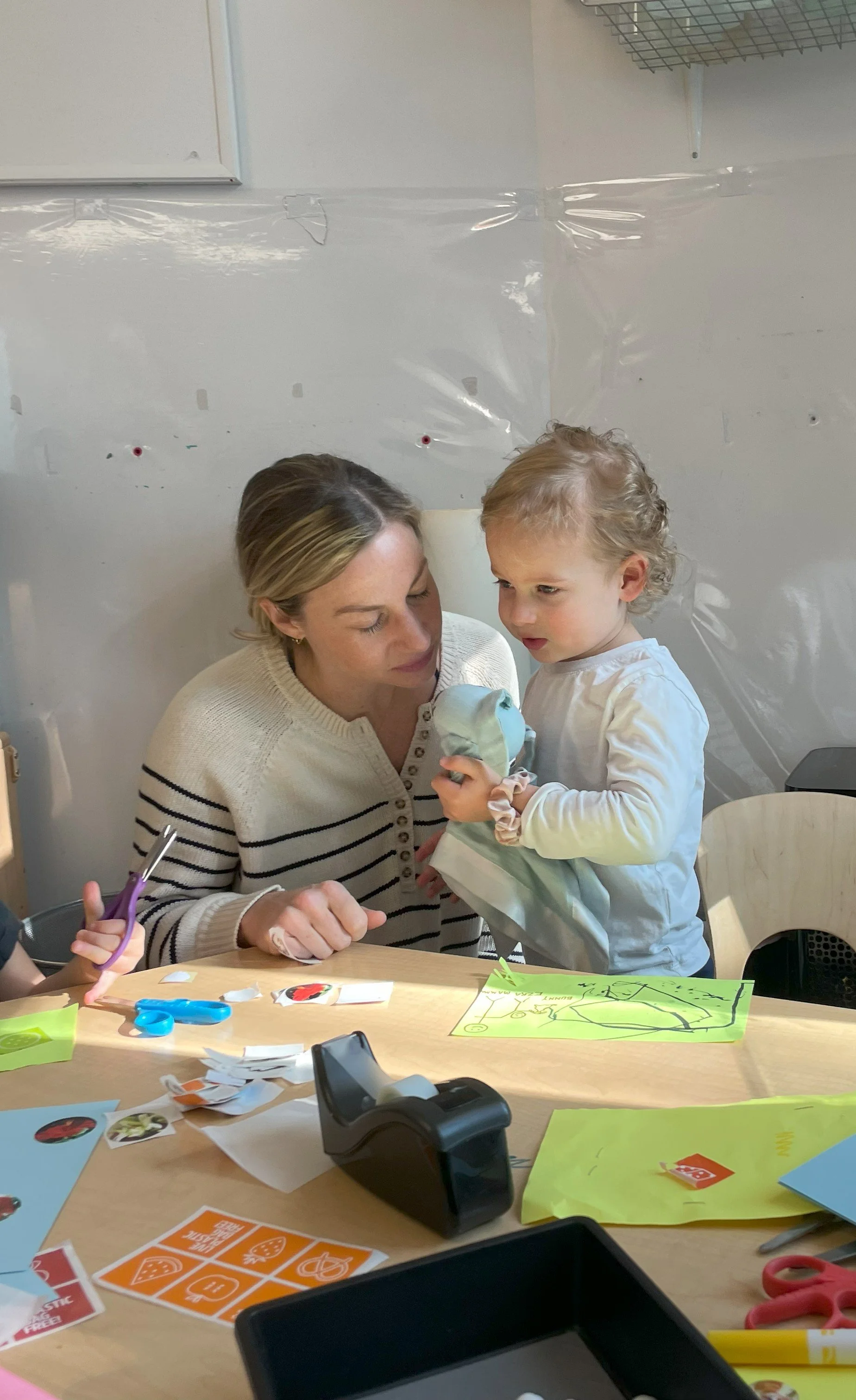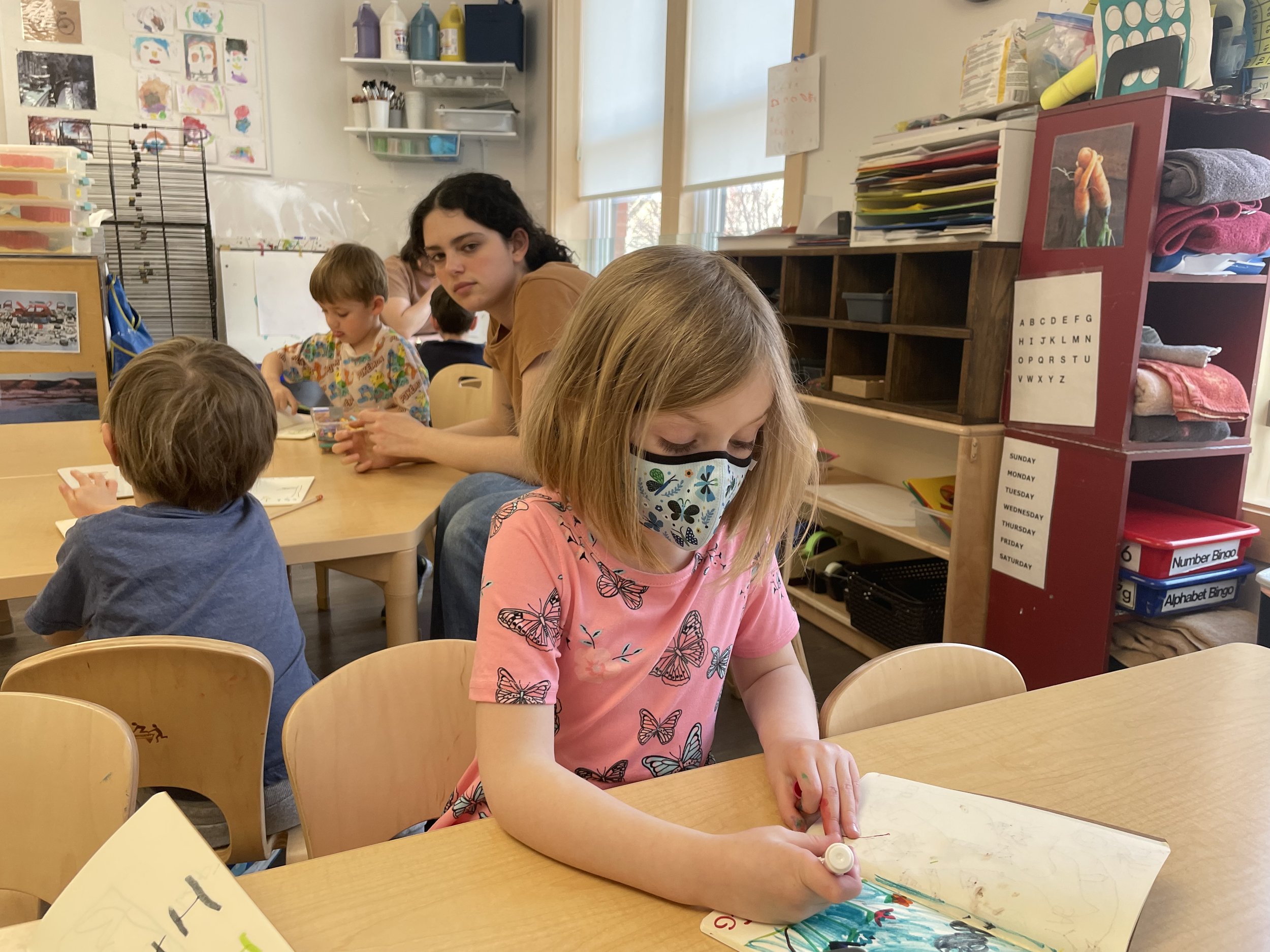It has been such a treat to have such warm days this week. Because it was so beautiful outside, we took a walk with JK to look for signs of spring. We noticed a lot of things starting to grow. Some plants were just peeking out of the dirt and some flowers were starting to bloom. We also noticed the sunny skies, spotted a few birds and saw some other interesting things, such as a broken bicycle and a hopscotch game.
Later at tabletime, we made journal entries about what we noticed on our walk. Though many children choose to write and draw regularly at playtime, a focused journal writing activity provides an opportunity for children to reflect on a specific experience and exercise their growing literacy skills.
Writing happens on a continuum, so we see many different forms of writing from children this age. At the beginning of the writing continuum is drawing, which can have varying degrees of complexity. In JK, most children are able to do some form of representational drawing. During this particular journal writing activity, children drew a variety of things, ranging from flowers and plants, to sunny skies, to the friend next to whom they were walking. This is what we’re looking for: children accessing their impressions and memories from our walk and putting their ideas on paper.
We include a visual of the date in case children want to add that to their drawing. As the year progresses and children have a deeper understanding of the calendar, we’re seeing more interest in replicating the date. Some choose to skip this step or write just the number while others might include a single letter or even all the letters of the day and month. This gives children practice making letter forms and more experience with these familiar words and numerals.
Once children have completed their drawings, we ask about adding words. For some children, we record their dictation, which helps to demonstrate the process of writing and build the understanding that what is spoken can also be written. Seeing their own words in print can be powerful for children.Some may prefer not to have any words with their drawings and that’s ok, too.
First attempts at writing are reflective of each child’s understanding of it. Initially, many children make squiggles and will report what those squiggles say. With a bit more experience, these squiggles begin to look more like letters. Eventually, children start to make random letters that, to them, represent their meaning. Each of these steps represents a part of the writing continuum. It is important to both encourage each child’s efforts and affirm that they are all forms of writing.
We often ask children to help us think about which sounds they hear in words that they want to write and encourage them to write those letters themselves. This type of writing, in which children begin to spell words phonetically, is called invented spelling. When children first begin to use invented spelling, they often start by writing just the first letter sound of a word. As they develop more experience, they might try to add more sounds that they hear, often eliminating vowels. Practice with invented spelling helps children develop the ability to both write and decode the written word.
Most children look forward to journal writing and enjoy creating a record of their thinking. It gives us insight into each child’s literacy development as well as their unique ways of approaching written work. At the end of the school year, children will bring their journals home to share with parents. In the meantime, we value sharing this experience with them in the JK classroom.
Contributed by Park West Co-op Teachers Amanda Speck and Katrina Nousaine Mann, JK-East








